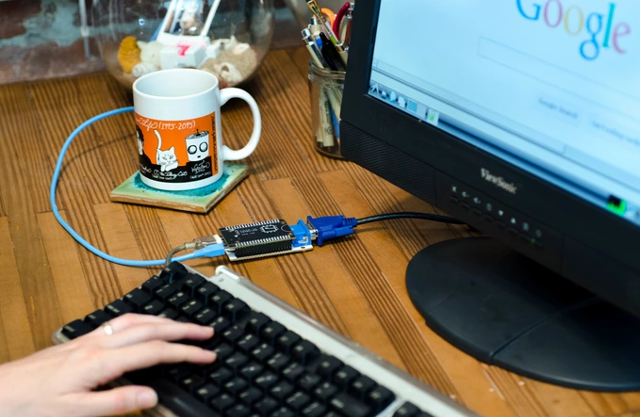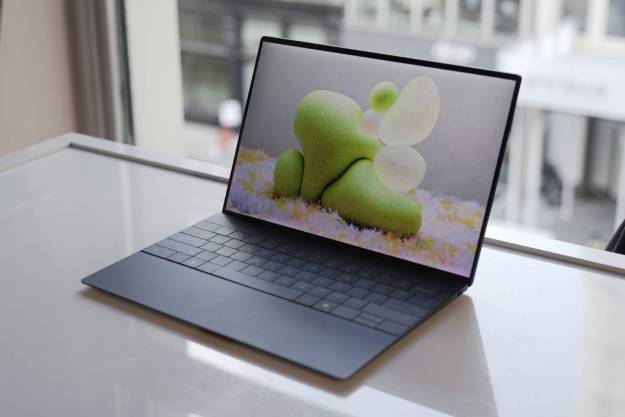
These two products are particularly unique. Pi was created by a UK nonprofit supporting computer science, and quickly ballooned into a worldwide success. Chip began as a small Kickstarter project that ended up raising more than two million dollars, and is now shipping tiny little computers everywhere.
Read: $9 Chip computer ships first units
Whether you are interested in these lil’l PCs as a teaching tool, a hobby, a gift, or a toy, comparing the two is a key first step before buying. Let’s take a look at how they stand up to each other.
Price

From 2012 through today, a selection of Pi computers has been developed for slightly different purposes, including Pi 2 and Pi Zero. The traditional models range in price from $20 to $40. Cheap for a computer, but nothing that can compare with the $9 Chip. If you are considering these traditional models only (especially if you want to buy batches for casual use or instruction), then Chip is more affordable.
However, we have to bring up the Pi Zero stick PC, one of the latest offerings from Raspberry Pi and designed to compete with Chip more directly. This little model costs only $5, making it the cheapest computer on the market.
Both the Chip and Pi Zero ship as bare computers with no power adapter or cords. Assuming you want to connect each device to display, and don’t have a spare USB power adapter, the Chip and Pi Zero will cost you about $25 and $30 respectively. The Pi Zero’s higher all-in cost is higher because unlikely the Chip, it does not have on-board storage, and so requires an SD card.
Connectivity

We wanted to talk about connectivity early, because it’s one of the most important features of these devices. What do they actually work with?
Chip has both Wi-Fi and Bluetooth, so you can connect your mouse and keyboard (and other devices) wirelessly, which makes it easy to move the Chip around when experimenting while keeping your controls in one spot – an ideal situation. Chip also includes a composite port for physical screen connections, a standard USB port, and a mini USB port.
Raspberry Pi connections vary across models. USB 2 connections are on most of these stick PC models, and vary from 1 port to 4 ports. Several Pi models also have options for Ethernet connections, and some provide a 3.5mm jack for video or audio out. Many of the later Pi models come with HDMI ports as well. Even the Pi Zero has a mini-HDMI socket built in, as well as a micro-USB port, a GPIO header, and a composite video header.
However, the Pi models don’t really do well in the wireless world. There’s no Bluetooth or Wi-Fi standard here. You can add it, but that means purchasing additional hardware, and possibly using up a USB port. This is the biggest difference between the two computers. Raspberry Pi has more connections but lacks the flexibility and versatility that Chip’s wireless features offer.
Also keep in mind that you can buy various upgrades for the stick PCs to give them new connectivity. This is why the Chip can actually handle things like HDMI and VGA with the right adapters, and Pi Zero can utilize full USB connections with the proper cases.
Power and Memory

Chip comes with a 1GHz R8 processor based on the ARM7 architecture. Raspberry Pi’s models, however, are all over the board due to their age and various prices. The Pi processor can range from an ARM6 single core to an ARM7 quad core to finally an ARM11 core in the Pi Zero. Processor speeds range from 700MHz to the Zero’s 1GHz. RAM varies from 256MB to 1GB. All Pis except the Zero do come with a GPU, a dual core VideoCore IV Multimedia Processor.
As you might expect, the more expensive Pi models are generally superior to the Chip in terms of performance. The latest RaspBerry Pi 2 offers several times more raw compute power. However, the Chip wins out against the Pi Zero, its most direct competitor. That version of the Pi has an ARM6 core c locked at 1GHz, while the Chip’s processor is based on ARM7, and runs at the same clock speed. Both the Chip and Zero have 512MB of RAM.
Storage
Generally speaking, Chip is much more interested in on-board storage than Raspberry Pi. Out of the box, Chip comes with 4GB of flash memory that you can play with, plus the options for many types of upgrades. Raspberry models include MicroSD or SD card ports for equipping storage, but don’t do any on-board storage. You will need to use a microSD card, which adds cost. On the plus side, though, it means Pi owners can easily select a card with enough storage to meet their needs.
Software

Both Chip and Raspberry Pi use a customized version of Linux, which should come as little surprise. However, Chip is more focused on tinkering and has more open source software, where models like Pi Zero use closed licenses.
Size

We know they’re small, but how small? A couple inches, either way. Technically ,the Chip is a tiny bit bigger than the smallest Pi model, the Pi Zero. The Chip is 40mm by 60mm, while the Pi Zero is 65mm by 30mm. In less scientific language, Chip is about 1.5 inches by 2.5 inches, while Zero is around 2.5 inches by 1 inch. If you’re convinced that size really does matter, then Zero is the smallest you can get, but the two are very similar.
Accessories
Both have a robust accessory lineup for various projects or tools. Chip probably has an edge here, however – it’s truly impressive how many options you have to buy batteries, adapters, calculator cases, and more to use Chip in various creative ways.
To give Raspberry Pi its due, the organization has also been producing cases for its models, such as the protective case for the Pi Zero that also gives it a USB port feature. There are also a few unique accessories for older Pi models, such as a model that provides extra sensors or a camera model. Plenty of options exist for both options.
Availability
This is a big one. Chip is a Kickstarter project, and while original backers have received theirs, those who aren’t part of the crowdfunding campaign can’t immediately purchase one. Instead they’ll have to pre-order, and those aren’t expected to ship until June of 2016.
All Raspberry Pi models are listed as available immediately. However, the Pi Zero is currently out of stock at U.S. retailers, so it may be hard to grab on this continent.
Verdict
We think the Chip is the most interesting computer. This is mostly because it has on-board wireless capabilities, a more powerful processor than the Pi Zero, and on-board storage. In our view, this makes the Chip a more refined PC. It’ll require fewer dongles to access all its capabilities. The Chip is also less expensive if you don’t have accessory components lying around.
Of course, availability is an issue. The Chip won’t be around till June, and the Pi Zero is out of stock. You may be tempted to grab whichever becomes available first, but if you have the choice, we think the Chip is the way to go.
Editors' Recommendations
- Arduino vs. Raspberry Pi
- Powerful upgrades turn 4th-gen Raspberry Pi into a more capable $35 desktop





